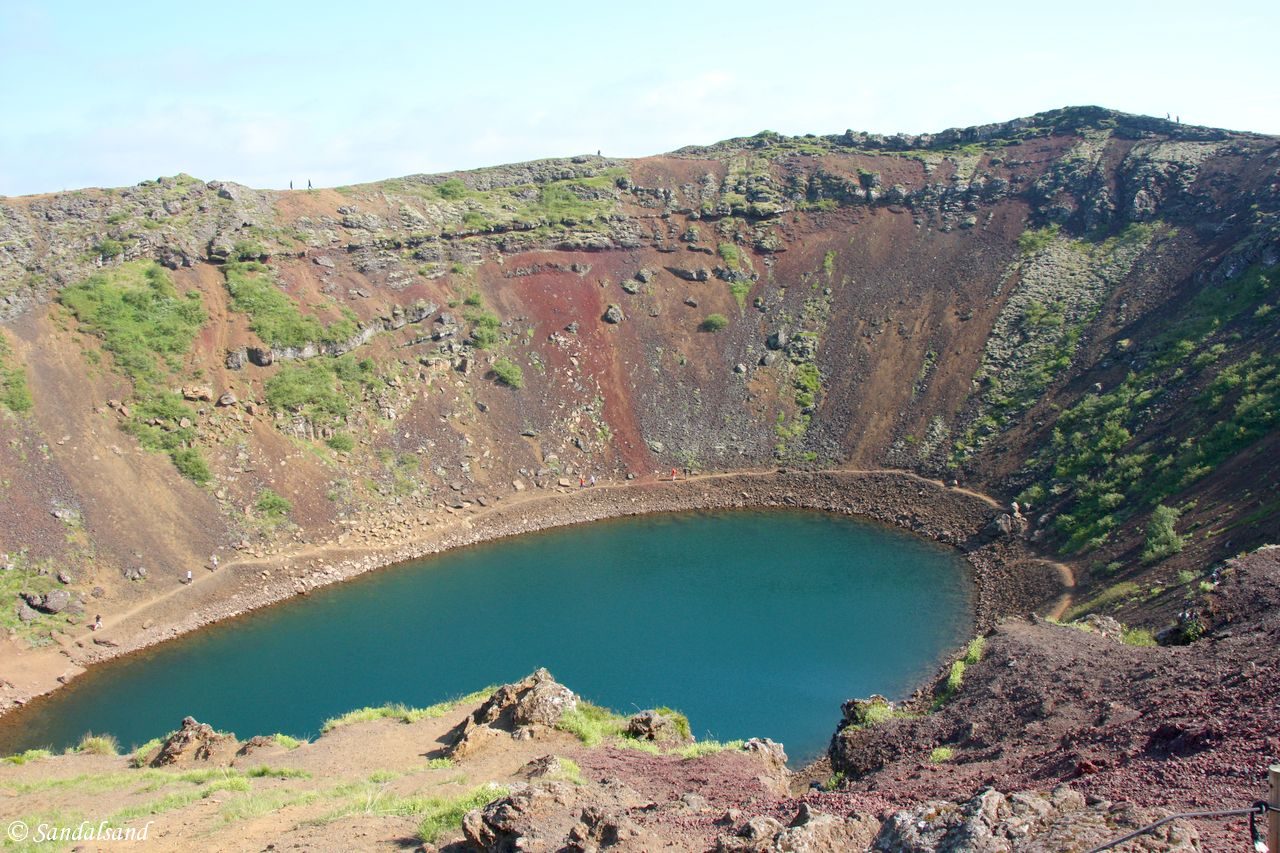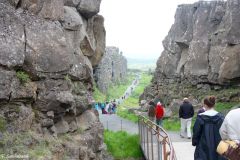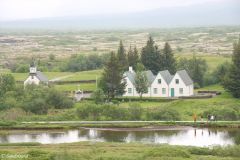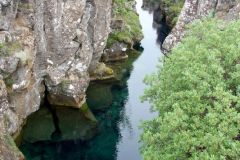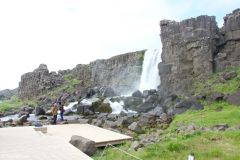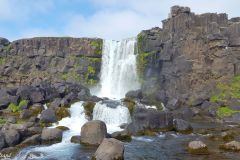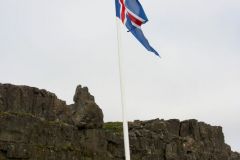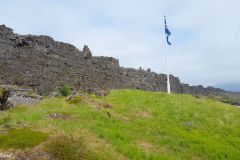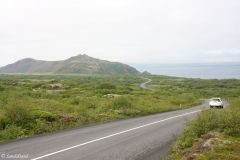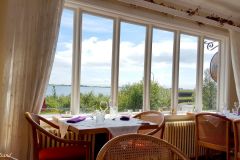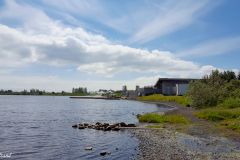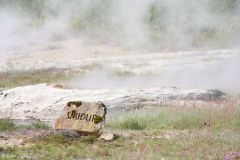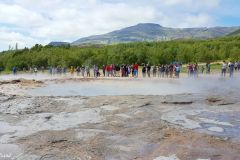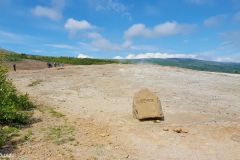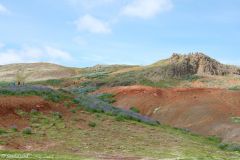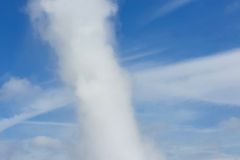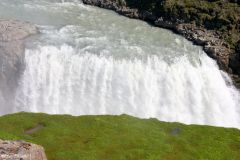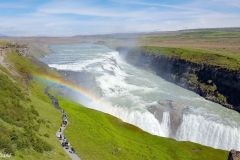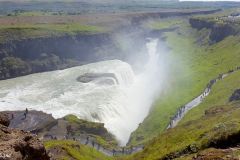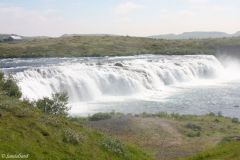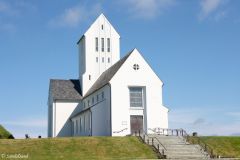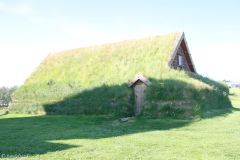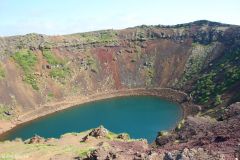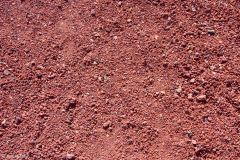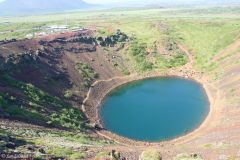The Golden Circle of Iceland is varied, it takes a full day to complete and even then you will have to skip some of the sights. Iceland is about Mother Nature and all her manifestations and marvels. You will not end your day without feeling impressed by what you have experienced, because the circle is so fascinating.
Introduction
You will find a Golden Circle, or Golden Triangle for that matter, in many countries. The one in Indochina (Thailand-Laos-Burma border area) is particularly (in)famous. Then you have the one in India (Delhi-Jaipur-Agra) and you will also find expressions like Norway in a Nutshell. This means that the route is touristy, there are lots of tour buses, and everything is geared towards satisfying the needs of the organised as well as the casual traveller. On the other hand, these places are not without interest, there is a reason why they have become so popular.
A perfect circle has no beginning and no end. To most people this one starts and ends in Reykjavik, the capital of Iceland. There are several tour agencies operating the circle, with some variations as to what they include. I made it a solo trip in a rented vehicle and found that very easy to do, and very satisfactory in terms of the end result. This article will take you to the places I went, as a sort of mini-guide, and will also indicate places I dropped for various reasons, be it time available or just plain interest. I spent around eight hours on the road. Have a look at the map at the bottom of the article to get your bearings straight.
A video teaser
Before you continue, please have a look at the video I made about the Golden Circle.
Getting into the circle
If you are on a guided tour, like on a bus, you have no choice but to follow your guide. On a self-driving tour you have one choice to start with. I would recommend you to drive into the circle from the northern side first. This is where most of the major highlights are situated and if you run out of time during the day, it would be a pity to miss them. So, take national road number 1 out of Reykjavik and head north, then right onto Road 36 towards Thingvallavatn. Roads in Iceland are well paved and well sign-posted.
There are a couple of places I would like to mention that I did not visit (there are more coming up towards the end of the article). In the valley of Reykjadalur it is possible to go on a 45-90 minutes hike, from the town Hveragerði, to a warm river. Take a swim and go back. This, I would say, is an activity for those who have been to the highlights of the Golden Circle before. Likewise, if you are interested in literature, you may want to pay a visit to the former home of 1955 Nobel laureate Halldór Laxness, and his wife Auður. It is called Gljúfrasteinn – Laxness museum and is now a museum situated in the valley of Mosfellsdalur, halfway between Reykjavik and Þingvellir.
.
I went straight to the national park and made a photo stop at a point overlooking the Þingvallavatn, a large lake about 30 minutes after Reykjavik. Then there was only a few minutes more to the first major attraction on the Golden Circle, or rather string of attractions. The national park is large, but the most interesting places are within easy walking distance from each other, and connected by paved roads or gravel tracks.
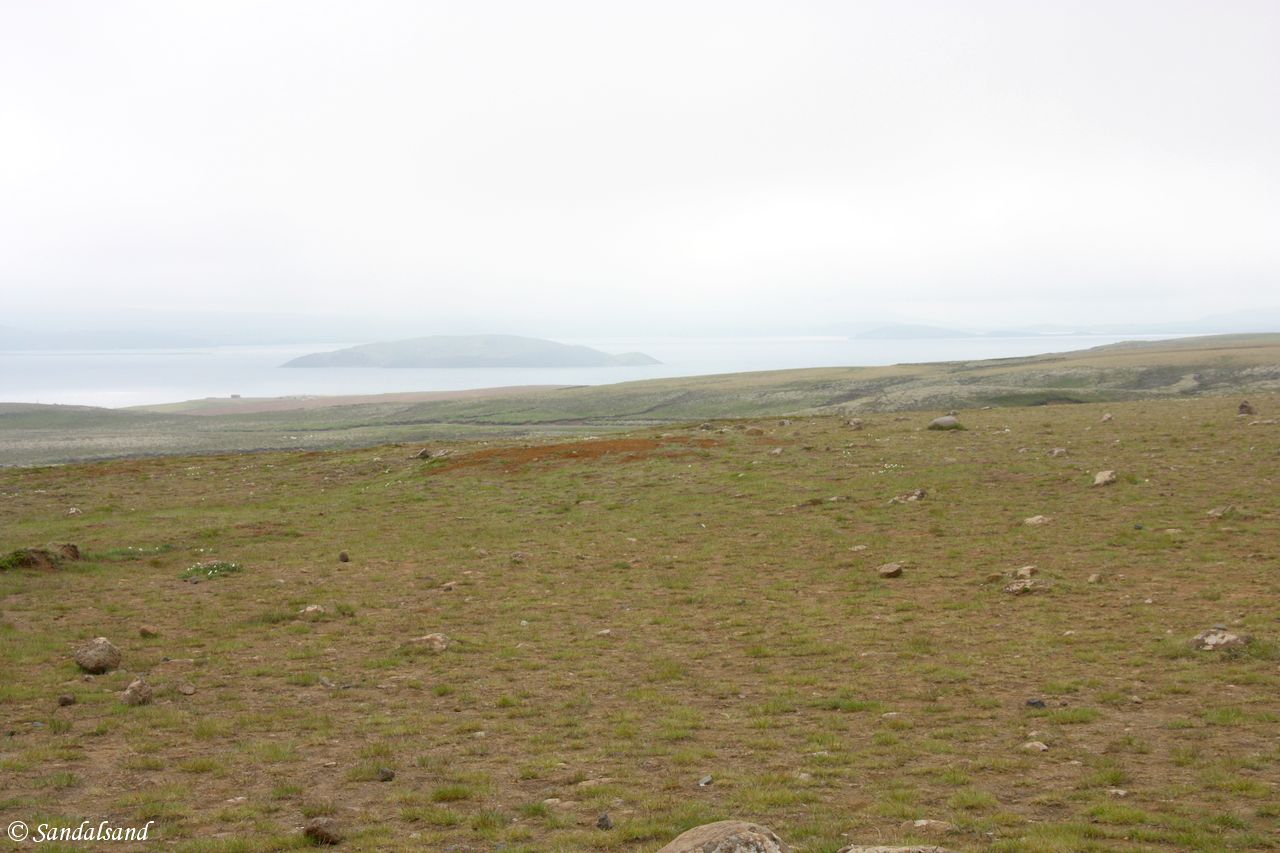
Thingvallavatn
Þingvellir National Park
Thingvellir is a UNESCO World Heritage Site for cultural reasons. I will come to that. It is also a world class natural phenomenon because this is where two tectonic plates meet. In short, on the one hand (quite literally speaking) you have the Eurasian plate and on the other you have the North-American. In fact, the entire island of Iceland is placed on top of the Mid-Atlantic Ridge forming the division between these two plates, or continents if you like. Iceland, built out of volcanic eruptions and lava sediments, is still a very volatile place. The other UNESCO World Heritage Site on Iceland, the island of Surtsey, grew out of nothing in 1963.
Here, at Thingvellir, you will be able to walk between the huge tectonic plates, quite literally from continent to continent in a matter of seconds. As we know, the plates are drifting apart, and this is why Iceland is so fragile and so volatile in terms of volcanic activity. There are few places on Earth where you have the ability to actually be on top of two massive tectonic plates floating above the mantle underneath. There is actually only one other place in the world where the drifting apart of tectonic plates can be witnessed; The Great Rift Valley in East Africa.
.
There are several parking lots here, but if you park at the largest near the visitor’s centre, you will find yourself right next to the Almannagjá. Until the 1960s it was possible to drive down this path, but the ground began to subside so there is now a wooden walkway to keep you safe. The Almannagjá is like a low cliff almost 8 km long, and there are several water-filled fissures along the way.
.
To the right as you head through the narrowest part you will see a wet lowland emptying into the Thingvallavatn lake. You may bear right here, and follow a string of paths like I did towards the church of Þingvallakirkja and also the Flosagjá. This is where people get to dive between the continents. So if you find the right agency in Reykjavik and have a diving certificate, this is the place to go. The rest of us can throw coins from the bridge and wish for the best.
Back on the main path, a gravel road, most people follow the high wall of Almannagjá towards the very picturesque waterfall called Öxarárfoss. From here it is back to the reason why Thingvellir is so important to Icelanders, and why UNESCO put it on their famous list.
.
Lögberg (Law Hill) is the name. There is a flag on top of a small hill to show you the location. The Althingi of Iceland is perhaps the oldest parliament in the history of mankind. It was held here from 930 until 1798. After that it was discontinued for 45 years until it was restored, in Reykjavik. Here convicted criminals would be thrown off the cliffs to a certain death, feuds would be settled and people would get ostracised. One of them was Eirik the Red, whose homestead I would be visiting a couple of days later. He was expelled and moved to discover and settle on Greenland. His son would later discover America.
That aside, Lögberg is still the place for the biggest and most important events and celebrations in Iceland. In 1944 it was here the Icelanders gathered to declare their autonomy, by dismissing the union with Denmark and proclaiming a republic. It was here in 1974 thousands of people gathered to celebrate that 1,100 years had passed since the settlement of Iceland.
.
As a Norwegian I have my heart with the Icelandic people. After all we discovered the island, we settled here, we built it and we ruled it until the Danes took over both our countries. The Icelanders were for the most part of Norwegian (Norse) blood. That it what we grew up believing. In fact, I read in a Reykjavik museum that modern DNA analyses have shown the 80% of the male settlers were Norse, but 62% of the female settlers had a Celtic origin.
This last part came to me as a surprise. The reason is of course that the Vikings brought female slaves, mistresses and wives from France and particularly from the British isles with them to Iceland in quite large numbers.
That aside, we are back on the road again. I spent about 90 minutes here.
Laugarvatn
My next stop was at Laugarvatn (Road 365), a lake which name translates into Bathing Lake, due to its natural hot springs. There is a hotel and a spa and a relaxing place to stop. I was hungry and had looked up a restaurant with a great location, but the experience was kind of mixed like my Tripadvisor review reveals.
Lindin restaurant: “Great place, medium food”. There are not really that many restaurants serving road trippers around the Golden Circle. Lindin at Laugarvatn offers a convenient place to stop for lunch midway between Thingvellir and Geysir. The building has a nice location a stone-throw away from the lake and has a wonderful view. The restaurant has two areas, bistro and restaurant, and this choice was what the waiter greeted me with.
I chose the one with the view, presumably the restaurant, with the quaint old furnishing and decor. Really nice indeed and a place to relax in. Apart from this: The waiters were talking very loudly right behind our back and they were “throwing” cutlery around (or so it seemed judging from the slamming). In addition the reindeer burger was dry (game often becomes dry if you don’t know how to treat it) and the french fries were doughy. All in all a mixed experience.
The Geysirs
Back on the road, this time called Road 37, we make our way through rather flat territory with the occasional low mountain and hill on either side. All of a sudden we are there, and so are every tour bus on Iceland. Here in Haukadalur there is a Geysir center, a parking lot or more, and to the north a string of small and large geysers.
This is a spring characterised by an ejection of water and steam high into the air. Now, the geysers are rare natural phenomena and the ones in Iceland gave name to them all. The Great Geysir has almost collapsed and the Strokkur Geysir is now the one that gives the largest outbursts.
There are actually a number of smaller hotpots as well around. You can see them as you walk the path, with water bubbling like from a kettle. The Strokkur bursts every five minutes or so, say 20 metres high, but there are several smaller springs that you may dare touch. Beware, the temperature is on the boiling point.
.
A lot of people walked up on a hill overlooking the area. I did not find a reason and I frankly was a bit disappointed with it all because I sort of expected more action. I left after half an hour with the sensation of having been there, done that. That was not the feeling I had after visiting the next sight.
The end of the circle, Gullfoss
Like I said in the introduction, a perfect circle has no starting or ending points. The Golden Circle of Iceland is not a perfect one in the sense of geography and roads. Gullfoss lies at the dead end of the road and you need to backtrack a bit after visiting it. That does not matter.
Gullfoss is perhaps the most monumental of all Icelandic waterfalls and they do have a number of them. The river Hvítá (White) is wide, carries an enormous amount of water and cascades in two stages before rushing on down the valley.
This is really awesome and the Icelanders have due reason to be proud of it. There are two levels on which to enjoy the view, corresponding to two car parks. The lowest will lead you on a trail right into the waterfall and not just a sprinkle of water to make you wet. The higher offers the views enjoyed on the following photos. The latter also has a visitor’s centre to suit you natural needs. My stay lasted about half an hour.
Returning to Reykjavik
Thingvellir, Geysir and Gullfoss are the top three places to visit on the Golden Circle in Iceland. The return on this day trip is however not without important and interesting places to visit. As the day was becoming old I had to make sacrifices, several of which will be mentioned briefly in the next section. The sites I did stop at made the effort very worthwhile.
Coming up first, 20 km after Gullfoss, was another white and roaring waterfall. The Faxi waterfall (also called Faxafoss and Vatnsleysufoss) is not anywhere near Gullfoss in raw power. It is quite wide and has a drop of, let me guess, 10 metres. There is a car park, picnic area and restaurant next to the waterfall. The river is called Tungufljót. This was a good place to stop, but I would have preferred to visit it before Gullfoss.
.
Skálholt Cathedral is another 15 km down the road from Faxi. Even though the scenery around is beautiful, this is a stop you should make because of its cultural significance. The cathedral itself dates back to 1963 and is of secondary importance. The reason you would want to make a stop is that Skálholt used to be the seat of the bishop, and the centre of learning and administration in Iceland for more than 700 years. There are archaeological excavations to be examined, a mysterious tunnel to walk through and a exhibition centre to look into.
If you have ever wondered what a crater would be like, and even with a lake in it, the Kerið crater is the answer. This volcanic crater is a caldera of a red volcanic rock, as opposed to the black colour we usually find in Iceland. You may walk around the lake at the bottom, or like I did, around the top. There are 55 metres down to the lake, the outer perimeter of the crater is 170 m wide and 270 m across.
For me, that was it. I had reached the end of sights on the Golden Circle but I had yet to complete the circle itself. I continued south on the Road 35 to Selfoss, a town not worthy of any prolonged visit and then turned the wheel north-west back to Reykjavik.
Places marked on the map, but not visited
Between Faxi and Skalholt you may want to make a stop at Fridheimar Farm for some tomato testing. From around here you could also make a detour to a place called the Secret Lagoon. Among Icelanders it is known as Gamla Laugin which translates to something like Old bathing place. The hot springs are not too hot to swim in, holding 38-40 degrees Celsius, and may make a nice alternative to the touristy Blue Lagoon closer to Reykjavik. Fridheimar and the Secret Lagoon are on the itineraries of some tour agencies.
After Selfoss and on my way back to Reykjavik I passed Hveragerði. This is a place with several greenhouses and is described as a hotbed for Icelandic horticulture. Further on up the same road I passed the Geothermal Energy Exhibition at Hellisheiði Power Plant. This is a showcase for the exploitation of geothermal energy.
Nesjavellir Geothermal Power Station is off-piste to most hired vehicles, and also not on the circle route. It is placed right in the middle of the circle and is apart from the power station also a centre for outdoor activities like hiking and riding.
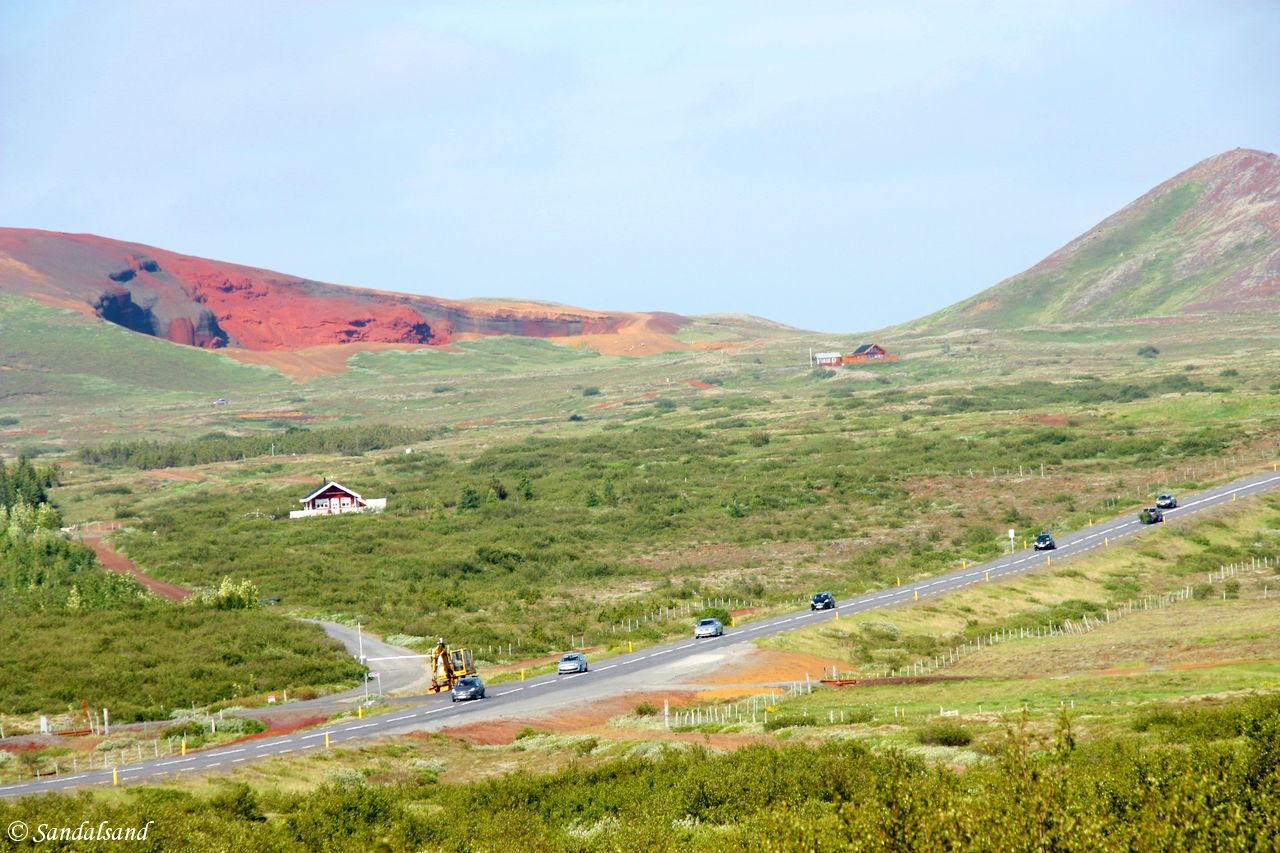
View of the surroundings of the Kerid Crater
Read more
The map below shows the places I visited (and some more) and routes I travelled on Iceland, spending four nights in the country. It is dynamic in the sense you are able to work with it, zoom in and out, and click the markers. I recommend you to hide the sections outside the Golden Circle, and if you are reading this on a desktop computer, open the map in a new tab or window to consult when reading the text above.
After I returned to Reykjavik this afternoon I actually went out again. This time to the south-western tip of the island and also to the famous and not-to-be-missed Blue Lagoon. Read the story in the first post from Iceland. The series from Iceland consists of these articles:
(1) How to get the most out of four nights in Iceland
(3) The Golden Circle (THIS)
World Heritage Site #1152 – Thingvellir National Park

